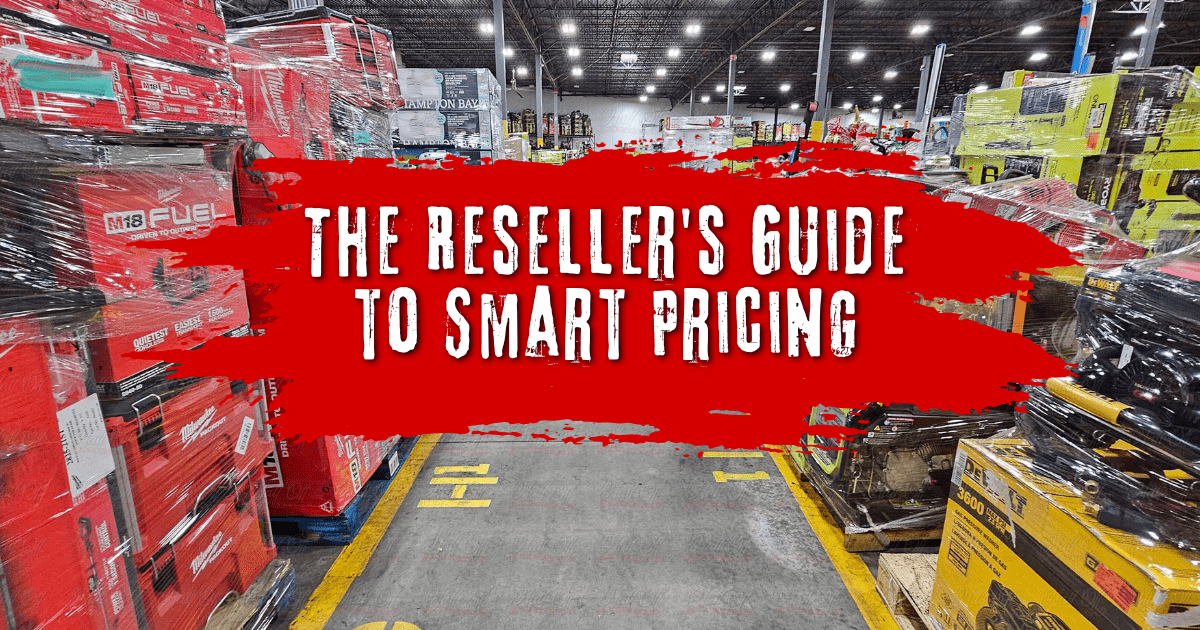The Reseller’s Guide to Smart Pricing
In the world of resale, pricing is more than just attaching a number to an item; it’s a complex strategy that involves understanding market dynamics, competition, and customer psychology. This article delves into various aspects of pricing strategies to help you maximize profits while staying competitive in the resale market.
Understanding the Market
In the resale business, understanding the market is key. This involves staying updated on trends that affect item values, analyzing past sales data for pricing insights, and evaluating current listings to understand competitive pricing. These steps are essential for setting prices that are both attractive to buyers and profitable for sellers.
Trend Awareness: Keeping abreast of market trends is essential in the resale business, as the value of items can fluctuate significantly based on demand and fashion trends.
Research Sold Listings: Examining past sales data provides insights into the market’s willingness to pay and helps in setting realistic prices.
Evaluate Current Listings: It’s important to understand your competition. Checking the prices of current listings aids in positioning your products competitively.
Pricing Models
In the resale business, choosing an appropriate pricing model is essential. Newcomers often start with prices lower than the market average, aiming for quick sales and to build a customer base. As their business matures, they typically adjust prices to match the market average, focusing on improving their listings’ quality. More established sellers can price their items higher, justified by the superior quality of their listings.
Beginner Strategy: New sellers often start by pricing items lower than the market average to encourage quick sales and build a customer base.
Intermediate Strategy: As you establish your business, align your prices with the market average, focusing on quality listings and marketing strategies.
Advanced Strategy: Established sellers can afford to price items higher by optimizing listings for SEO and providing exceptional quality.
Additional Considerations
Several factors influence pricing strategy, including the condition of items, branding, customer service, and scalability.
Condition Ratings: Transparency about the condition of items is key to building trust and justifying prices.
Branding and Marketing: Effective use of social media and collaborations can increase brand visibility and justify higher pricing.
Customer Service: Good customer service policies help in retaining customers and supporting higher pricing strategies.
Scaling and Diversification: As your business grows, diversifying inventory can support varied pricing strategies.
Pricing Strategies
In the resale business, pricing strategies are influenced by several key factors beyond just market trends and competition. These include the condition of the items, the effectiveness of branding and marketing efforts, the quality of customer service, and the ability to scale and diversify the business. Being transparent about the condition of items helps in building customer trust and supports the justification of prices. Leveraging social media and collaborations can enhance brand visibility, which may warrant higher pricing. Excellent customer service is crucial in retaining customers and can also justify higher prices. Lastly, as the business grows, diversifying the inventory allows for more flexibility in pricing strategies, catering to different market segments and demands.
Cost-Plus Pricing: This involves calculating the total cost of items and adding a markup to determine the selling price.
Competitive Pricing: Setting prices based on competitors’ pricing, adjusted for unique features or better quality.
Value-Based Pricing: Pricing based on the perceived value of the items to the customer, especially effective for unique or luxury items.
Psychological Pricing: Using tactics like charm pricing to make prices appear more attractive.
Premium Pricing: Setting higher prices for high-value or luxury items to reflect their exclusivity.
Bundle Pricing: Offering combined products for a single price to increase average order value.
Final Tips
To conclude, effective pricing in the resale market involves a combination of strategies and continuous adaptation.
Account for Overhead: Include all costs like platform fees, shipping, and taxes in your pricing.
Prepare for Sales: Price items higher to accommodate for sale promotions.
Continuous Learning: Stay updated on market trends and adapt your pricing strategies accordingly.
A successful pricing strategy in the resale business is about striking the right balance between understanding market dynamics, analyzing competition, and engaging with customer psychology. Tailoring your strategy to your business stage and continuously adapting to market changes are key to maximizing profits while remaining competitive.








